Chicken Breakfast Porridge
Chicken Breakfast Porridge: Savory Bowls with Chicken, Rice or Oats, Egg or Cheese
Why Choose Chicken Porridge for Breakfast?
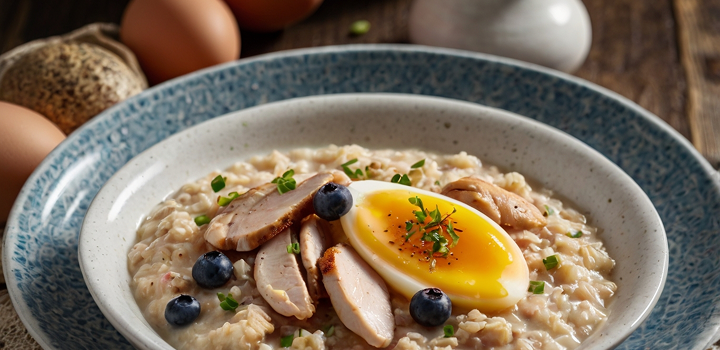
Health Benefits
When I first started making savory porridge for breakfast, I was drawn to it for one simple reason: it makes you feel good. A bowl of chicken porridge is warm, filling, and soothing to the digestive system. It’s one of the few meals that offers high-quality protein, slow-releasing carbohydrates, and gut-friendly warmth in one dish—especially important first thing in the morning when your body is just waking up.
Chicken provides lean, complete protein, supporting muscle repair and immune function without overwhelming fats. When paired with rice or oats, the result is a meal that fuels you evenly throughout the morning. Unlike sugary cereals or toast, which can spike and crash your blood sugar, this porridge sustains you. I often recommend it for people recovering from illness or dealing with morning fatigue—it’s easy to eat and comforting to the stomach.
Rice porridge is naturally gluten-free, making it a smart choice for people with sensitivities. Oat porridge offers soluble fiber (especially beta-glucans), which supports heart health and digestion. Depending on your preference, both options can be tailored to suit high-protein or low-fat needs, and when made properly, they’re not just healthy—they’re genuinely enjoyable.
Global Comfort Food Traditions
You might think chicken porridge is just a modern breakfast trend, but it’s been a cultural mainstay in kitchens around the world for generations. The Chinese call it congee; in Korea, it’s dakjuk; in Vietnam, cháo gà. In Indonesia, there’s bubur ayam. Each version begins with a similar idea: simmer rice or grains slowly in broth with meat until everything melds into one soft, savory bowl.
In my travels, I’ve learned that what makes each version distinct is not the method—it’s the spirit behind it. These dishes are always made with care, whether to nourish a sick child or to greet a chilly morning. I bring that same approach to every pot I cook. When I make a Korean-style chicken porridge, I use sliced scallions and sesame oil for aroma. If I go the Vietnamese route, I add fish sauce and a squeeze of lime at the end. These nuances matter, and you’ll discover your own favorite traditions once you get familiar with the base.
Choosing Your Base: Rice vs Oats
Rice-Based Options
When I want tradition and depth of flavor, I reach for rice. The most common types I use are jasmine or long-grain white rice for a silky congee texture. The key to success is the rice-to-liquid ratio and cooking time. For each cup of rice, I use 8–10 cups of broth and simmer for about 45–60 minutes. The goal is to break the rice down completely so the grains dissolve into the broth. You’re not making soup—you’re making something creamy and cohesive.
To speed things up, I often rinse the rice and soak it for 30 minutes before cooking. For ultra-smooth results, you can pulse the rice dry in a blender before cooking. That’s a technique used in some Cantonese kitchens to shorten the simmer time.
I prepare the porridge in a heavy-bottomed pot to prevent sticking, and I stir every 10 minutes to keep the rice from settling. Toward the end, I’ll season with salt, a dash of soy sauce, and occasionally a drop of sesame oil or a small cube of fermented tofu for umami. This rice base is incredibly forgiving—you can add protein and garnish it a hundred ways.
Rice Porridge Base Cooking Guide
| Ingredient | Amount | Notes |
| White rice | 1 cup | Jasmine or long-grain |
| Chicken broth | 8–10 cups | Homemade or low-sodium store-bought |
| Salt | To taste | Add in final 10 minutes |
| Optional flavor | 1 tsp soy | Adds depth without overpowering |
Oat-Based Porridges
When I’m short on time or want a creamier texture, I turn to oats. Rolled oats cook much faster than rice—usually in about 10–15 minutes—and still deliver the cozy, savory quality of porridge. Unlike sweet oatmeal, this version starts with chicken broth as the base and finishes with meat, aromatics, and sometimes cheese or egg.
I cook the oats directly in warm broth, stirring until they plump and soften. Once they begin to break down, I lower the heat and stir in shredded chicken or add a raw egg to the pot, stirring to create silky threads. What I like about oats is their ability to absorb flavor quickly. A handful of mushrooms, grated garlic, or a splash of soy can completely change the dish in a matter of minutes.
Oats are naturally high in fiber, which keeps you full longer, and they’re easier to digest for many people than even rice. They also blend well with dairy additions like a spoonful of cream or a sprinkle of grated cheese if you’re going for a fusion-style breakfast.
Protein Additions: Chicken, Egg, and Cheese
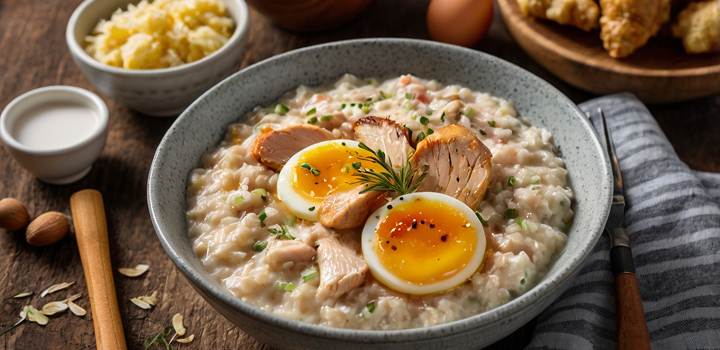
Chicken: Breast, Thighs, or Bones
The type of chicken you choose will determine your porridge’s flavor and texture. For a clean, mild broth, I recommend boneless, skinless breast. Poach it gently in water or broth with a few slices of ginger and scallion, then shred it finely before stirring into the porridge. This is the go-to in Korean dakjuk—light, simple, healing.
If I want deeper flavor, I go with bone-in thighs or drumsticks. I simmer them directly in the broth I’ll use for the porridge, skimming off impurities and letting the bones do their work. After about 45 minutes, the meat is tender enough to shred, and the broth is rich and golden. I strain the bones, return the meat, and then stir in the rice or oats.
You can even make porridge entirely from leftover roast chicken. Just strip the bones, boil them for stock, and use the meat and broth together. It’s an excellent way to minimize waste while maximizing flavor.
Incorporating Eggs
Eggs add richness and body to your porridge. You can crack a raw egg directly into the pot near the end of cooking and stir it quickly to create wisps, or you can poach the egg separately and nest it on top before serving. Both methods work beautifully.
In Vietnamese-style cháo gà, sometimes a whole preserved egg or soft-boiled egg is added as a finishing touch. The yolk runs gently into the porridge, enriching each bite. If I’m making oat-based porridge, I tend to stir in the egg at the very end while the oats are still simmering gently—it thickens the mix slightly and adds a lovely golden tint.
Adding Cheese
Cheese might seem like an unusual addition, but it works wonderfully in oat-based or fusion-style chicken porridge. I discovered this technique while experimenting with Westernized toppings. A handful of grated cheddar or mozzarella stirred in at the very end makes the porridge creamy and filling. It pairs especially well with pepper, sautéed onions, or a spoonful of tomato relish.
I’ve also tried cream cheese swirled in just before serving—it adds tang and richness without overwhelming the dish. Think of it like chicken risotto’s cousin. If you’re using strong cheeses, go light. You want balance, not dominance.
Cooking Techniques
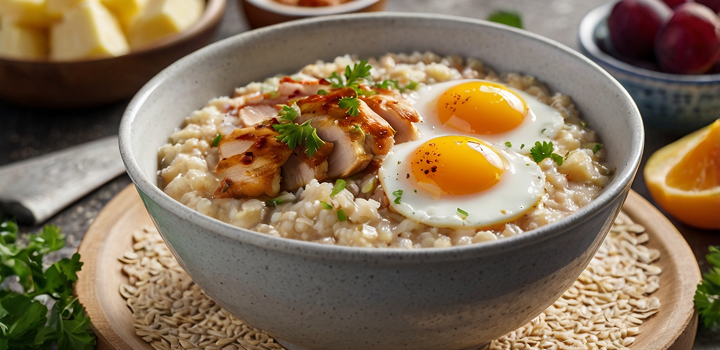
Stove-Top Simmering
My main method for cooking porridge is the classic slow stove-top method. It allows the most control over texture, flavor, and thickness. I start with a heavy-bottomed pot and cold broth. I add rinsed rice or oats, bring it to a gentle boil, and immediately reduce the heat. From this point, patience is key.
I leave the pot on the lowest flame for at least 45 minutes, stirring every 10 minutes so the grains don’t settle or burn. This process is what creates the velvety texture. In the last 10 minutes, I add meat, eggs, or cheese depending on the recipe. I finish with seasoning and taste for salt. No other method gives me this level of control—this is pure culinary craftsmanship.
Pressure Cooker / Instant Pot
When I’m short on time, I use a pressure cooker or Instant Pot. It’s especially handy for rice, which breaks down in just 15 minutes under high pressure. Oats cook even faster—about 8–10 minutes.
I place all the ingredients directly into the pot: broth, grains, meat, seasonings. I close the lid, select the “Porridge” or “Pressure Cook” mode, and start. After the cycle ends, I always allow 10 minutes for natural pressure release—otherwise, the grains might spurt out through the valve.
The advantage of this method is that it requires minimal oversight. The downside is that I can’t adjust the thickness during cooking, so I always add slightly less liquid than I would on the stovetop and top it off later if needed.
Comparative Cooking Time Table
| Method | Grain Type | Cook Time | Notes |
| Stove-Top (low heat) | Rice | 45–60 min | Best control over texture |
| Stove-Top (oats) | Oats | 15–20 min | Quick, creamy, requires regular stirring |
| Pressure Cooker | Rice | 12–15 min | Even cooking, less flexible on texture |
| Pressure Cooker | Oats | 8–10 min | Ultra-fast, ideal for weekday mornings |
Rice Cooker Convenience
When I cook in the morning or at the office, I rely on a rice cooker. It works well for both rice or oat porridge using the “Porridge” or “Congee” mode. I load the ingredients the night before, set a delayed timer—and wake up to a hot, fragrant bowl.
The key to success is not overloading the pot. If using bones or chunky vegetables, I use a mesh insert or trivet to prevent scorching. Otherwise, it’s the laziest and most reliable weekday method.
Flavor Building Blocks and Garnishes
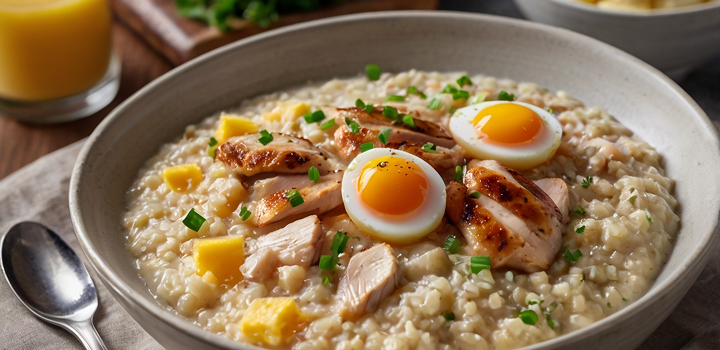
Broth Foundations
The base of any good porridge is the broth. Ninety percent of the time, I make it myself. I use chicken bones, necks or back, a few slices of ginger, an onion, and celery stalks. I simmer it for at least an hour, skimming any scum. Then I strain it. The result is a clear, golden broth without excess fat.
When I don’t have time, I use store-bought broth—but only low-sodium, no-MSG versions. Sometimes I enhance it with a spoonful of fish sauce, a dried shiitake mushroom, or even a little miso. These deepen the flavor, especially when I’m making Japanese or Korean-style porridge.
If I’m making the oat version, I sometimes add a splash of milk at the end, but only when I’m using neutral seasonings. The broth should be harmonious—salty but not too salty; rich but not greasy.
Topping Options Across Cultures
One of the easiest ways to elevate simple porridge into a complete breakfast is through toppings. I love experimenting with them. Vietnamese cooks add lime, green onion, and fried garlic. In Indonesia, it’s crackers, boiled eggs, and soy sauce. In Korea, I serve porridge with sesame oil, kimchi, and seaweed flakes.
In a more Western style, I top it with shredded cheese, poached egg, and freshly ground pepper. Sometimes caramelized mushrooms or crispy shallots. The key is contrast—soft porridge with crunchy garnish. The aroma comes from fresh herbs like scallions, parsley, or basil. For brightness, a few drops of lemon or lime, especially if cheese is involved.
Quick Recipes to Try
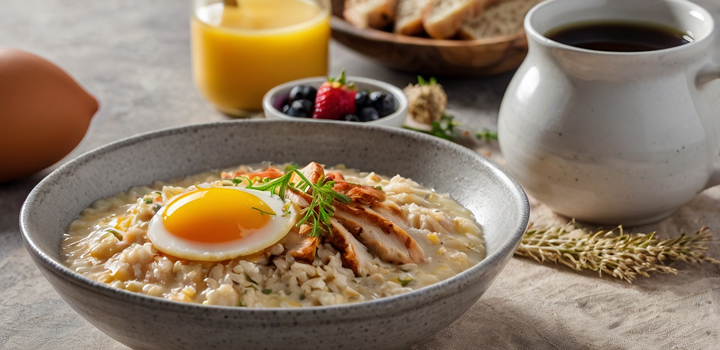
Korean Dakjuk (Chicken & Rice Porridge)
I begin with a lean chicken broth made from breast meat, with added ginger and a drop of sesame oil. I add rinsed rice and simmer it down until it completely breaks apart, stirring constantly. Then I shred the chicken and return it to the pot. I serve it with scallions, toasted sesame, and a spoonful of kimchi if desired. It’s a light morning dish with deep flavor and a soft texture.
Chicken & Oat Congee
In a pot, I combine chicken broth, oats, and a bit of ground chicken. I simmer it until the oats start to break apart. Then I add grated ginger and a little garlic. At the very end, I stir in a beaten egg, letting it cook into ribbons. I serve it with soy sauce and herbs. It’s a quick, nourishing breakfast ready in 15 minutes.
Cheese-Topped Chicken Porridge
I cook oat porridge in chicken broth, add cooked chicken and a pinch of pepper. At the very end, I stir in a handful of shredded cheddar or parmesan until it melts. I serve it topped with a poached egg and caramelized onion. It’s not a traditional recipe, but it’s incredibly rich and satisfying—especially on a cold morning.
Customization and Dietary Considerations
Thick vs Thin Porridge
The first thing I tell beginners is: there’s no universal rule for porridge thickness. Some like it thick and scoopable, others prefer it silky and spoonable. The only way to find your ideal consistency is to test and adjust as you go.
On the stovetop, I start with a 1:8 ratio of rice to liquid. If I want it thinner, I add warm broth slowly near the end of cooking. For oats, the base ratio is 1:4. If I forget to stir and it thickens too much, I never add cold water—that dulls the flavor. Instead, I reheat with hot broth or milk, stirring until it loosens.
I also pay attention to when I add the ingredients. If I add meat early, it thickens the broth naturally. If I add eggs too soon, they stiffen and make the texture grainy. For ultra-smooth porridge, I always finish with protein at the end.
The lid also matters. Covered simmering makes a wetter, soupier result. Cooking uncovered lets steam escape, reducing and thickening the porridge. I tweak the lid during cooking depending on what I want.
Gluten-Free & Low-GI Options
One of the biggest advantages of this breakfast is that it’s naturally gluten-free—if you choose the right ingredients. Rice is always safe. Oats are technically gluten-free but can be cross-contaminated unless marked certified. I always read the label when cooking for someone with Celiac or sensitivity.
For a lower glycemic index, I sometimes use brown rice or steel-cut oats. These take longer to cook but release sugar more slowly and keep you full longer. I also avoid adding sugar or sweetened broths. If I want richness, I use olive oil or avocado on top instead of cream.
For dairy-free versions, I replace cheese with nutritional yeast or miso paste for umami. For vegetarians, I use vegetable broth and poached tofu instead of chicken. This recipe is extremely adaptable—once you understand the foundation, you can modify it to almost any dietary need.
One-Pot Meal and Meal Prep
This is one of the few breakfasts I can prep completely ahead. On Sundays, I simmer a big pot of porridge, then store it in portioned containers in the fridge for up to five days. I always keep the garnishes separate—things like scallions, egg, or cheese should be added fresh when reheating.
When reheating, I use a splash of broth or water in a saucepan on low heat. Microwave works too, but I stir halfway through and cover it with a damp paper towel to avoid drying.
In winter, I also freeze portions. I pour the porridge into silicone muffin molds, freeze, then pop them into a bag. When I want breakfast, I just drop two or three “pucks” into a pot with broth and reheat gently.
This method has saved me on busy mornings. It’s warm, nourishing, and one less decision to make before the day starts.
15+ Frequently Asked User Questions (Search Intent)
1. Can I cook chicken porridge overnight?
Yes, I often use a slow cooker or rice cooker with a timer. Combine all ingredients before bed, set the porridge mode or low heat, and you’ll wake up to a hot meal. Just be sure to use enough liquid—porridge thickens as it sits.
2. What type of chicken gives the best flavor?
For depth, I always use bone-in thighs or drumsticks to make the broth. Breast gives a cleaner taste but less richness. If you’re short on time, leftover roasted chicken works well too.
3. Is rice or oats healthier for porridge?
It depends. Oats have more fiber and are lower on the glycemic index. Rice is easier to digest and more traditional. Both are healthy if paired with protein and a low-sodium broth.
4. How do I fix porridge that’s too thick?
I reheat it with hot broth or water while stirring constantly. Never add cold liquid—it shocks the starches. A small knob of butter or oil can also help loosen the texture.
5. Can I freeze leftover chicken porridge?
Absolutely. Cool it completely, portion it into containers or silicone molds, and freeze. To reheat, warm it slowly on the stovetop with extra broth.
6. What are the best toppings for savory porridge?
My favorites are poached egg, scallions, sesame oil, and chili flakes. For Western versions, try cheddar, sautéed mushrooms, or even a drizzle of pesto.
7. Is porridge good for a low-sodium diet?
It can be. Use unsalted homemade broth and skip soy sauce. Instead, flavor with garlic, herbs, and lemon juice for brightness without salt.
8. Can I add milk or cream to chicken porridge?
Yes, especially with oat-based versions. A splash of cream or milk adds richness. Just avoid curdling by adding it at the end over low heat.
9. What’s the best rice for porridge?
I prefer jasmine or long-grain white rice. Short-grain works too but makes a starchier, thicker result. Avoid basmati—it doesn’t break down as well.
10. Can I make it vegetarian?
Yes. Use vegetable broth and add tofu, mushrooms, or poached eggs instead of chicken. Miso and soy sauce can build depth without meat.
11. Is it okay to leave the porridge unattended while simmering?
Not really. Grains settle and stick. I stir every 10–15 minutes and keep the heat very low. For full convenience, use a rice cooker instead.
12. Can I make porridge without broth?
Technically yes—you can use water—but it will be bland. I recommend using at least half broth for flavor, or seasoning water with aromatics and salt.
13. How can I make porridge spicy?
I stir in chili oil, crushed pepper flakes, or sambal near the end. Spices burn quickly, so I never add them at the beginning.
14. What consistency should porridge have?
It should be soft and spoonable—not runny like soup, but not stiff like mashed potatoes. It should slowly pour off a spoon when hot.
15. Can I eat chicken porridge cold?
You can, but I don’t recommend it. The flavor and texture are much better warm. If you must, serve it chilled with fresh herbs and lemon for brightness.
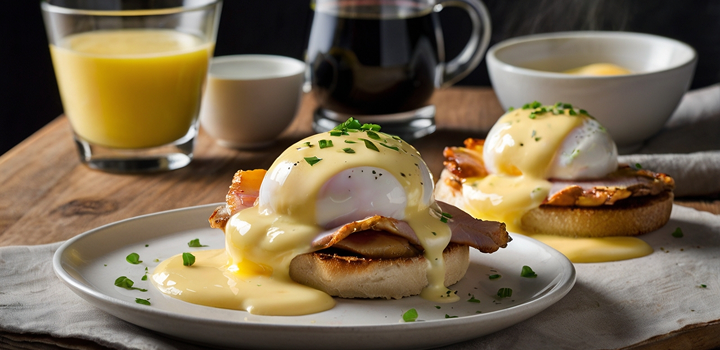
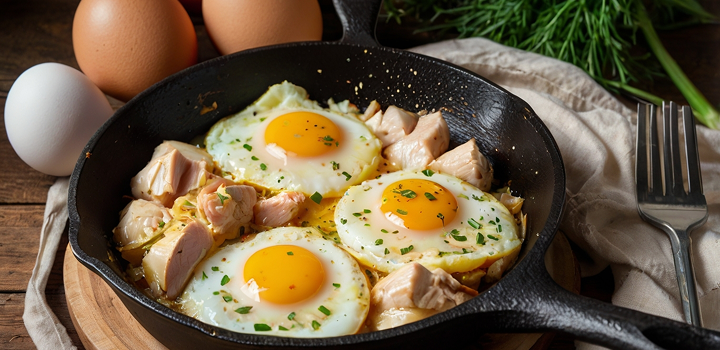
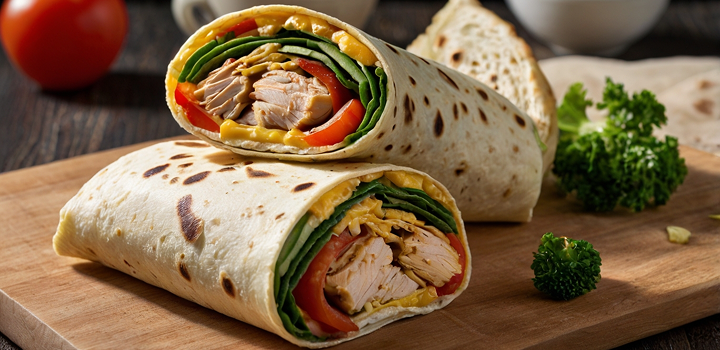

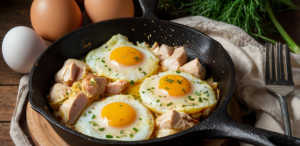
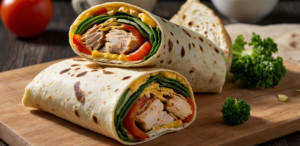
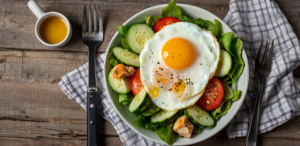
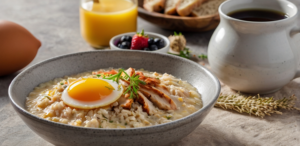
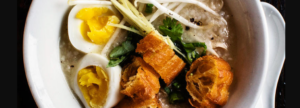


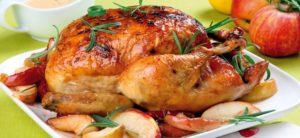
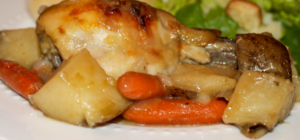
Post Comment